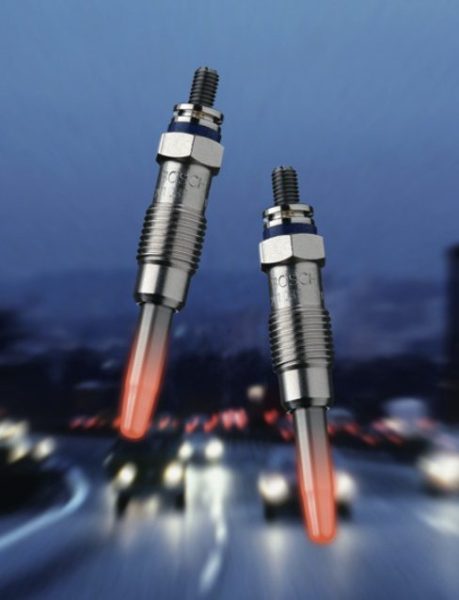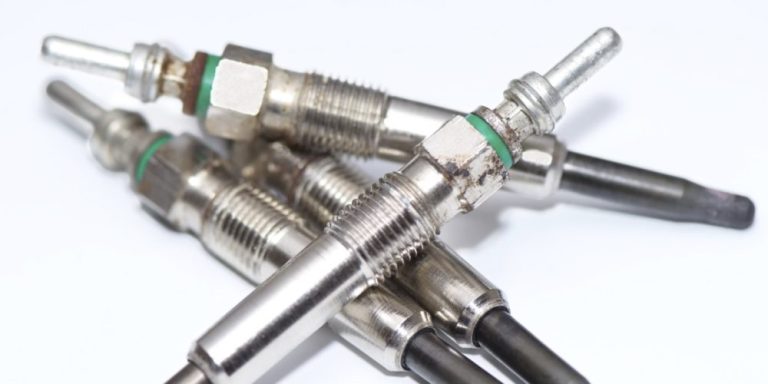If you own a diesel engine vehicle, you might have heard of glow plugs. Glow plugs are essential components of diesel engines that help the engine start by heating the air inside the combustion chamber. In this blog, we will take a closer look at glow plugs, how they work, and their importance in diesel engines.
What are Glow Plugs?
Glow plugs are heating devices used in diesel engines to help ignite the fuel during cold weather conditions. Unlike gasoline engines that rely on a spark plug to ignite the air-fuel mixture, diesel engines compress air to a high temperature, which causes the fuel to ignite. However, during cold weather, the compressed air might not get hot enough to ignite the fuel, and that is where glow plugs come in.
How do Glow Plugs work?
Glow plugs are made up of a heating element, a metal casing, and a connecting terminal. The heating element is typically made of a material with high resistance, like platinum or ceramic, which heats up when an electric current is passed through it. The metal casing helps to transfer the heat to the surrounding air, while the connecting terminal provides a way for the electric current to flow through the plug.
When you turn on the ignition switch, the glow plug controller sends an electric current to the glow plugs, which heats up the heating element. The heating element then heats up the surrounding air inside the combustion chamber, making it hot enough to ignite the fuel. Once the engine starts, the glow plugs switch off, and the engine continues to run on its own.
Why are Glow Plugs important?
Glow plugs are crucial in diesel engines, especially during cold weather conditions, because they ensure that the engine starts smoothly. Without glow plugs, the cold air inside the combustion chamber can prevent the fuel from igniting, causing the engine to fail to start. Additionally, glow plugs can also reduce emissions from diesel engines by ensuring complete combustion of the fuel, resulting in less unburnt fuel entering the atmosphere.

When should Glow Plugs be replaced?
Glow plugs can wear out over time due to the high temperatures they operate at. Some signs that your glow plugs might need replacing include:
- Difficulty starting the engine, especially in cold weather.
- The engine misfires or runs rough when starting.
- Poor fuel economy.
- The check engine light comes on.
If you experience any of these signs, it’s best to have a professional mechanic inspect your glow plugs and replace them if necessary.
In conclusion, glow plugs play a vital role in diesel engines, helping to ensure the engine starts smoothly, especially during cold weather conditions. If you own a diesel engine vehicle, it’s essential to ensure that your glow plugs are working correctly and replace them when necessary to avoid starting problems and reduce emissions.
Types of Glow Plugs: There are two main types of glow plugs: the traditional “pencil-style” glow plugs, and newer “post-heating” glow plugs. Pencil-style glow plugs are the most common and are usually found in older diesel engines. They have a long, slender design and are installed directly into the engine block. Post-heating glow plugs, on the other hand, are installed further downstream in the exhaust system and continue to heat the exhaust gases even after the engine has started.
Functionality: Glow plugs are essential for diesel engines to start in cold weather conditions. In cold weather, the air in the combustion chamber can be too cold to ignite the fuel, making it difficult or impossible for the engine to start. The glow plugs heat up the air in the combustion chamber, making it hot enough to ignite the fuel. Once the engine has started, the glow plugs turn off, and the engine can run on its own.
Glow Plug Control Unit: Modern diesel engines typically have a glow plug control unit (GPCU) that regulates the operation of the glow plugs. The GPCU monitors the engine’s temperature and controls the amount of time the glow plugs are on. This prevents overheating of the plugs and ensures that the engine starts smoothly.
Replacing Glow Plugs: Glow plugs can wear out over time due to the high temperatures they operate at. If your glow plugs need replacing, it’s important to use the correct replacement parts specified by the manufacturer. It’s also crucial to ensure that the replacement plugs are installed correctly, as incorrect installation can cause damage to the engine.
Final Thoughts: Glow plugs are essential components of diesel engines that help ensure smooth starting in cold weather conditions. By heating up the air in the combustion chamber, glow plugs ensure that the fuel ignites and the engine starts smoothly. It’s important to ensure that your glow plugs are working correctly and replace them when necessary to avoid starting problems and reduce emissions. If you’re experiencing any issues with your diesel engine, it’s best to have a professional mechanic inspect your glow plugs and diagnose the problem.
Advantages of Glow Plugs:
- Reliable Cold-Weather Starting: Glow plugs ensure that diesel engines start reliably in cold weather, which can be a challenge for diesel engines due to their reliance on compression rather than spark to ignite fuel.
- Improved Fuel Economy: Glow plugs help diesel engines to operate more efficiently, resulting in improved fuel economy and reduced emissions.
- Increased Engine Life: By ensuring that diesel engines start reliably, glow plugs can help increase the overall lifespan of the engine by reducing wear and tear on the starter motor, battery, and other components.
- Low Maintenance: Glow plugs are relatively low maintenance components that only need to be replaced periodically, typically after 100,000 miles or more.
Disadvantages of Glow Plugs:
- Increased Cost: Diesel engines equipped with glow plugs can be more expensive to purchase than gasoline engines due to the additional components required.
- Reduced Performance: In some cases, glow plugs can reduce the overall performance of a diesel engine by causing a delay in ignition and reducing power output during startup.
- Shorter Battery Life: The use of glow plugs can put additional strain on the battery, leading to a reduced lifespan.
- Potential for Failure: Glow plugs are subject to wear and tear and can fail over time, leading to starting issues and potentially costly repairs.
Overall, the advantages of glow plugs, such as reliable cold-weather starting, improved fuel economy, and increased engine life, outweigh the disadvantages, which include increased cost, reduced performance, and potential for failure. By ensuring that glow plugs are properly maintained and replaced when necessary, diesel engine owners can enjoy the benefits of these essential components.










